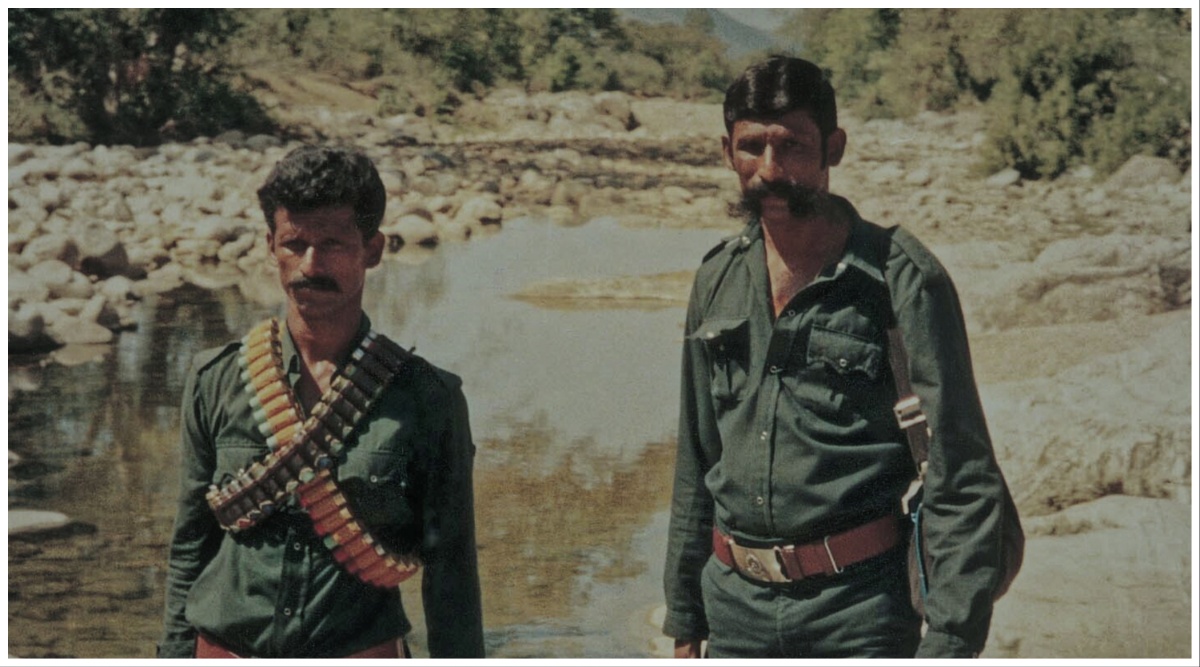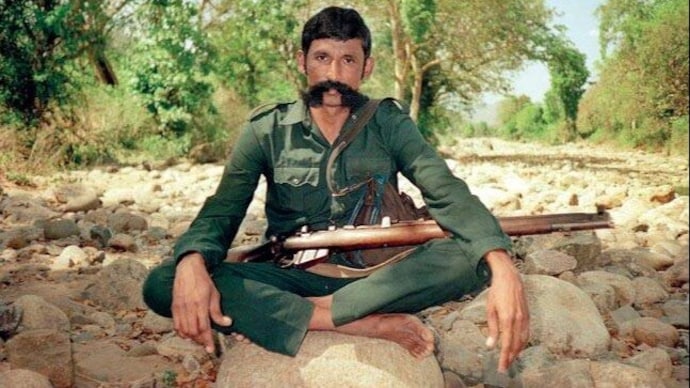Koose Muniswamy Veerappan, a name synonymous with elephant poaching, sandalwood smuggling, brutal murders, and a string of high-profile abductions (including the kidnapping of Kannada movie star Rajkumar), was a figure who captured the public’s imagination with his audacious crimes and elusive nature. His distinctive, luxuriant whiskers became a symbol of his notoriety, and his ability to evade capture for over a decade only added to his infamy. Veerappan’s reign of terror finally came to an end in 2004 when he was killed by a Special Task Force.
The legend of Veerappan, often compared to the mythos of Robin Hood, has inspired numerous books and films. Now, his story is being brought to life once again in a new Netflix docuseries, “The Hunt for Veerappan.” This gripping series unfolds like a breathless thriller, portraying the intense battle between Veerappan’s cunning and a determined force backed by two state governments. The series delves into the mind of this criminal mastermind and his ragtag band, providing a riveting exploration of a man who became a symbol of lawlessness and rebellion.
The Netflix docuseries “The Hunt for Veerappan” is a four-episode journey that meticulously unravels the complex story of the notorious criminal. Directed by Selvamani Selvaraj, the series is anchored in rigorous research that navigates through a dense thicket of information to present a clear and compelling narrative.
Focusing on the relentless pursuit of the fugitive, often described as “a wild animal in human form,” the series offers an in-depth look at the man behind the myth. Revealing interviews with Veerappan’s wife, Muthulakshmi, and officers from the Special Task Force units provide personal insights into the man and the hunt. The series also features meticulously sourced photographs and television news footage, transporting viewers back to a pre-surveillance era when Veerappan and his gang waged a guerrilla war against the Karnataka and Tamil Nadu governments.
The series skillfully employs the conventions of the true crime genre, utilizing ominous music, stylized slow-motion montages, and carefully measured information to heighten the suspense. “The Hunt for Veerappan” doesn’t just recount the facts; it immerses the audience in the tension and drama of the hunt, creating an engaging and thrilling experience that explores one of India’s most infamous criminals.
“The Hunt for Veerappan” is a riveting docuseries that masterfully unravels the complex tale of one of India’s most infamous criminals. Handsomely produced and skillfully stitched together, the series offers a linear, behind-the-scenes account of an unwieldy story, highlighting the numerous missed opportunities and the dangers of prematurely declaring victory over Veerappan.
The timeline reveals acts of hubris, such as Veerappan inviting a photographer to his hideout, revealing his gang’s identities, and kidnapping Rajkumar for 108 days. Yet, the question lingers: Is this a show about Veerappan that we need to watch at this point in time?
In his 1969 study “Bandits,” Marxist historian Eric Hobsbawm explored social banditry, where criminals like dacoits and highway robbers became folk heroes within their contexts. He noted the permanent emotions and roles associated with brigandage, such as freedom, heroism, and the quest for justice.
“The Hunt for Veerappan” does not glorify the criminal’s brutal deeds, including the beheading of Indian Forest Service officer P Srinivas. However, nearly two decades after Veerappan’s demise, a show about him raises fundamental questions that remain unanswered. What were the economic factors that shaped him? How did he continually evade arrest, beyond his intimate knowledge of remote forest terrain? Why is he still worshipped?
These questions hint at a deeper understanding of Veerappan’s life and crimes, one that goes beyond the sensational aspects of his story. While the series is undoubtedly engaging, it leaves viewers pondering these underlying issues, perhaps reflecting a missed opportunity to delve into the socio-economic and cultural factors that contributed to Veerappan’s rise and enduring legacy.
“The Hunt for Veerappan” doesn’t shy away from addressing the serious allegations of human rights abuses that occurred during the search operations for the infamous criminal. However, the series’ approach to these allegations is at times problematic, as it primarily relies on the accounts of former Special Task Force members. This can be likened to inviting someone as the chief guest for a commemoration only to put them on the defensive.
For instance, former Karnataka Special Task Force officer Ashok Kumar, when questioned about the incident in Nallur village where policemen allegedly torched the houses of suspected Veerappan aides, provides a vague response: “Something went on, I think. I don’t remember much.”
More disturbingly, Veerappan’s wife, Muthulakshmi, claims that she was tortured in custody, including receiving electric shocks to her genitals and breasts. The series does not include any corresponding statements to confirm or deny these serious allegations.
This lack of balance and thorough investigation into the claims of human rights abuses is a notable shortcoming in the series. While “The Hunt for Veerappan” offers an engaging and detailed account of the pursuit of one of India’s most notorious criminals, its handling of these sensitive issues leaves something to be desired. The absence of a more comprehensive examination of these allegations may leave viewers with unanswered questions and a sense that the full story has not been told.
“The Hunt for Veerappan” presents a complex and nuanced picture that goes beyond a simple narrative of police heroism. Statements from an ex-policeman, who equates the actions of the police with those of the dacoits they were pursuing, and a former associate of Veerappan, who laments the suffering of the people, muddy the waters of clear-cut morality.
Rather than providing definitive answers, the show lays these statements bare, allowing viewers to grapple with the larger moral issues they present. Questions about whether the governments of Karnataka and Tamil Nadu reacted too late or chose the wrong methods in their pursuit of Veerappan are similarly left open-ended, inviting viewers to engage with these complex issues.
The series is rich in detail, with lengthy interviews providing tantalizing insights. Muthulakshmi’s revelation of her admiration for Veerappan’s bravado and her loyalty to his legacy offers a glimpse into how he captured the imagination of many. Even the minutiae of the investigation, such as an operation that relied on clues from faecal matter, adds depth to our understanding of how Veerappan was finally captured.
Yet, despite these insights, the series leaves the question of “why Veerappan” largely unanswered. The enigma of the man, his motivations, and his enduring appeal remains as elusive as Veerappan himself was for much of his life. “The Hunt for Veerappan” succeeds in shedding light on the complex pursuit of a notorious criminal, but it also leaves viewers with lingering questions and a sense that the full story of Veerappan’s life and legacy is still waiting to be uncovered.








